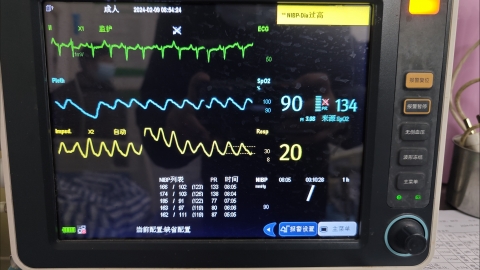What diseases can be detected by an electrocardiogram (ECG)?
Under normal circumstances, an electrocardiogram (ECG) captures the tiny electrical changes generated with each heartbeat by placing electrodes on the skin, thereby recording and diagnosing the heart's condition. An ECG can detect diseases such as sinus bradycardia, cardiomyopathy, myocardial ischemia, cardiac hypertrophy, and myocardial infarction. Detailed analysis is as follows:

1. Sinus Bradycardia
An electrocardiogram can accurately measure and record the heart's electrical activity, including heart rate and waveform characteristics, helping physicians determine whether the heart rhythm is normal and identifying cases of sinus bradycardia where the heart rate falls below the normal range.
2. Cardiomyopathy
Cardiomyopathy causes changes in the heart muscle's electrophysiological activity. These changes may include abnormal depolarization and repolarization of myocardial cells, leading to specific waveform alterations on the ECG. By monitoring and analyzing these ECG changes, physicians can preliminarily determine whether there is myocardial pathology and perform comprehensive analysis along with other diagnostic results to confirm cardiomyopathy.
3. Myocardial Ischemia
Characteristic waveform changes such as ST-segment elevation or depression and T-wave inversion may appear on the ECG. These changes are typical manifestations of myocardial ischemia and help physicians promptly identify the presence of myocardial ischemia.
4. Cardiac Hypertrophy
The ECG can show characteristic changes of cardiac hypertrophy, including left or right ventricular hypertrophy. Cardiac hypertrophy may be caused by conditions such as hypertension, valvular disease, or cardiomyopathy, which lead to thickening of the heart muscle or enlargement of the heart chambers.
5. Myocardial Infarction
During myocardial infarction, the electrical activity of myocardial cells becomes abnormal, resulting in specific waveform changes on the ECG. Physicians can determine the location, timing, and extent of the myocardial infarction based on these ECG waveform changes.
During the examination, it is important to relax the body, breathe steadily, avoid speaking or moving in order to prevent interference with the accuracy of the ECG results.







